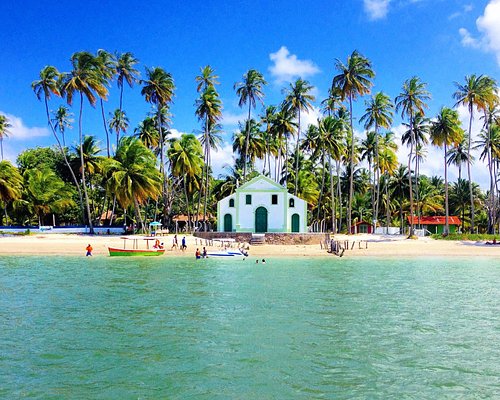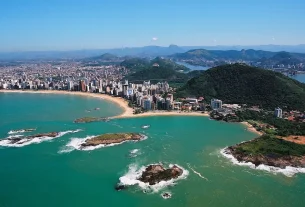The beaches of Tamandaré stand out among the attractions that the city offers. Among the existing ones, one of the most praised is Praia do Carneiro, in a paradisiacal setting that brings together: sea of green water, completely preserved clear sand and permeated by coconut trees, in addition to also housing tasty kiosks. It seems like a lie to find so many adjectives in one place, but Carneiro achieves the feat, as does Tamandaré beach. Most of the city’s beaches remain deserted most of the year.
In addition to admiring the beautiful views of the beaches and enjoying the sea breeze, it’s worth taking bucolic walks through mangroves on the Ariquindá River and others that cross the region. A dip in the waterfall at the Saltinho Biological Reserve is also a must for anyone looking to renew their energy. At the end, take time to visit the Casa do Artesão and the historic churches.
Tours
Taking boat trips along rivers surrounded by mangroves and rich in marine species is one of the favorite attractions of those who visit Tamandaré. It’s worth the stop at Santo Aleixo Island and the region’s waterfall. Discover the little churches near the beaches that preserve traces of colonial architecture.
Santo Aleixo Island
Departing from Barra de Sirinhaém, it is possible to take a fun boat trip to Santo Aleixo Island, in the southern region, a few kilometers ahead. There, you can snorkel in incredible natural pools alongside curious marine species.
Catamaran to Praia do Carneiro
Departing by catamaran from Praia dos Carneiros you reach an immense sandbank in the region of Praia Guadalupe, where you can take an invigorating clay bath. Other tours take you to Ilha do Coqueiro Solitário.
Saltinho Biological Reserve
The reserve has 583 hectares of pure Atlantic forest. Numerous species of animals live there, including some threatened with extinction. Highlights include the hare, armadillo, agouti, raccoon, honeyeater and colorful birds such as taioca, woodpecker, toucan, bat and brooding turkey. Administered by Ibama, the site also houses a museum and a dam.
Bulha D´Água Waterfall:
Located on the edge of the Saltinho Biological Reserve is this waterfall. At 10 meters high and with three waterfalls, the temperatures are suitable for relaxing baths. The surrounding native forest completes the look.
Ariquindá River
The river is 70 meters wide and 6 meters deep, making it an ideal place for boat trips. All around, mangroves and rich fauna and flora make up the wild scenery. Among the animals found are: mollusks, crustaceans, oysters, fish, uçá crab, aratus, crabs, guaiamuns and pitu.
Morro do Oitizeiro
The panoramic view reveals the blue sea and coconut trees. An image of the city’s patron saint was placed on the trunk of the oitizeiro. The point served as an observatory in World War II to prevent invasions.
St. Peter’s Church
Its structure comprises three windows, a wooden cross at the top and a bell tower on the side. Inside there is a choir and main altar with images of Saint Peter. It is located around the summer houses, with access from a staircase on Praia de Campas.
Saint Joseph’s Church
The church was built in the 19th century, on its facade you can see three doors with a coat of arms that draws attention right in front. It provides a beautiful view of Tamandaré. It is on the border between Praia de Tamandaré and Campas.
Craftsman’s House
Opened in 2001, it has an interesting collection of popular local artisans. The most commonly found products are trays, earrings, brooches, necklaces, keychains, decorative vases, baskets and sculptures made by hand from coconut trees, vines, panniers and coconut flowers. It is located at Praça Almirante Tamandaré.

Sign up for our newsletter and stay up to date with exclusive news
that can transform your routine!
Warning: Undefined array key "title" in /home/storelat/public_html/wp-content/plugins/link-whisper-premium/templates/frontend/related-posts.php on line 12
Warning: Undefined array key "title_tag" in /home/storelat/public_html/wp-content/plugins/link-whisper-premium/templates/frontend/related-posts.php on line 13




